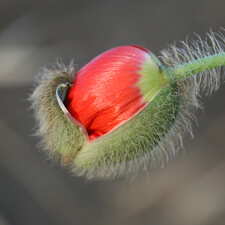
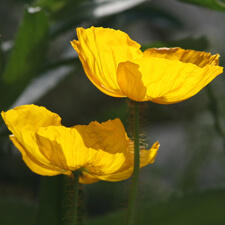
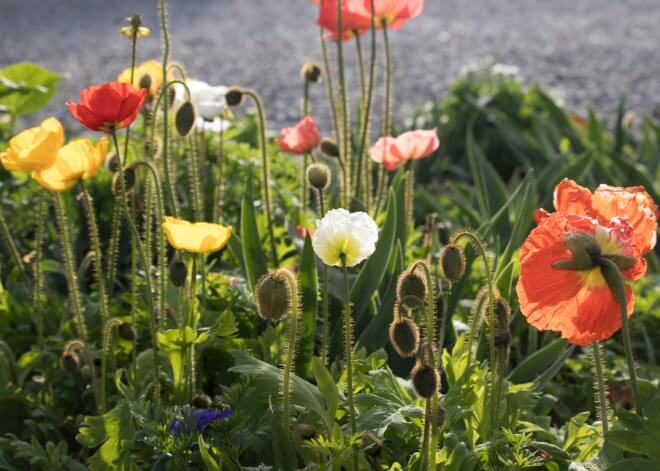
I don’t know of another poppy that likes cool weather as much as the Iceland Poppy. In mild climates, it’s a perfect chilly weather poppy and for cooler climates, it can be one of the early bloomers of spring. However, the name is deceiving; this poppy is not from Iceland! It’s native to subpolar regions of Europe, Asia and North America, and the mountains of Central Asia.
Iceland Poppies are gorgeous as a cut flower and I love to see them in bouquets. But when they look so beautiful in your yard and attract so many bees, it may be hard to cut them. At least it is for me.
Planting
Iceland poppies are the only annual poppy (Papaver) in my yard that I don’t grow from seed. Every fall, I plant a flat of six-packs to scatter around the garden. I recommend buying these smaller plants because I’ve found that larger plants don’t do as well. It’s best to transplant Iceland Poppies while they are as small as possible.
Planting them is little tricky because in my zone (9b), fall can be pretty hot and these poppies love, love cool weather. I wait until the weather is at least in the low 90s and even then, I have to protect them with shade while they are getting established or they will literally just burn up and become one with the soil.
Although it is a short-lived perennial, in my yard it’s definitely an annual. In warmer zones (like 9 and higher), the Iceland Poppy is ideally planted in the fall. It starts blooming fairly quickly in autumn and into the spring. However, it temporarily stops blooming when temperatures dip below freezing at night. There can be a little die back with the foliage initially and then it comes back full force. As soon as the weather gets hot (in May or June), the plants burns up in my yard.
In cooler zones (1-8), Iceland Poppies are best planted in the spring and will bloom all summer. In these zones, they are perennials.
Seeding & Germination
I’ve heard from other gardeners that Iceland Poppies reseed well. But that has not been my experience. In many years of growing them, I have gotten exactly one volunteer. And since I’m not trying to get seeds, I am draconian in deadheading each and every blossom to extend the blooming.
The optimum temperature for Iceland Poppy germination is 70F. The seeds don’t like to be covered, but do like darkness for germination. They are finicky about the right conditions for germination and that might be why a lot of gardeners like me buy plants instead of relying on seeding. If you have a method that works for you, I’d love to hear from you in the comment section at the bottom of this post.
Container Gardening
For those of you gardening on patios or terraces, Iceland Poppies are fantastic in containers. In warm weather (like 80F or higher), just give them partial sun. In cooler weather, they love the full sun.
Must haves for the Iceland Poppy
- Fertilizer. I’ve definitely seen a big difference when they are planted in richer soil (created with sheet mulching).
- Deadheading. To prolong blooming, be sure to cut down the spent blossoms.
Color Variations
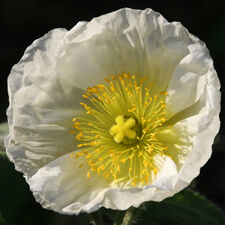
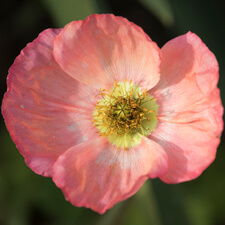
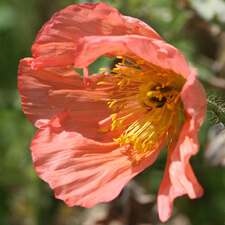
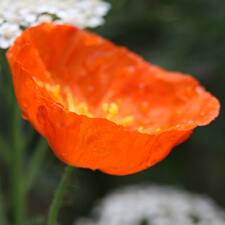
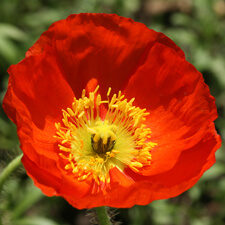
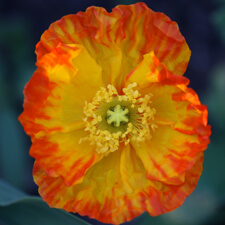
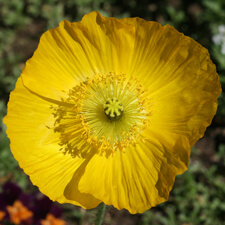
Details
Latin Name
USDA Zone
Bloom Season
Type
Reseeds







Thank you! I have some of these growing now…
I love Poppies..
I agree with the point regarding difficulty germinating the seeds. I Have only been able to get one or two plants this way despite a lot of effort, purchasing biodegradable cells to avoid the need to transplant etc.
This year I purchased small plug plants and they all successfully transplanted are doing really well ?
Thanks for the comment Nicki! I’ve yet to meet anyone who is really successful in germinating Iceland Poppy seeds. But I want to meet that person to learn their secrets. 🙂
I am *that* person who successfully started Icelandic poppy seeds this spring! I started them in late March in my unheated, Zone 4 greenhouse. I started them in small 6-packs, then moved them into 6-packs with larger cells and was able to separate out plants where more than one had germinated in a cell. At that point I fertilized them with Osmacote.
They stayed in the greenhouse for all of April and they grew really well and didn’t seem to mind the days when the greenhouse got pretty warm. I planted them outside in May and they’re blooming now. I’m pretty stoked that it all worked out!
We have an area in our yard that we just removed a large area of lilacs last year, and now I have lots of weeds coming up to content with but I saw these plants that I was sure we’re not weeds. All of a sudden they started to bloom and I sent a pic to my Mother I have a whole bunch of Icelandic Poppies growing in this area and I have no idea how they got there. We have only lived here two years and haven’t planted anything there.
What’s eating them? I live in coastal Connecticut and some thing in my area finds these puppies as delicious as I do beautiful, gobbling off the flower buds as soon as they are ready to open. Any ideas what that might be? I tried peppermint spray and castor oil to no avail
I have planted iceland poppies from seed into newspaper pots that I made myself. I will plunge the pot with the seedlings into the soil and will not disturb the roots at all. This will be the second planting this year. The first seem to be damaged by something. The leaves all seem to be eaten . The stems are still there just about. They have not flowered yet and am wondering what has attacked them. I have beer traps down but there doesn’t seem to be much snail activity. If someone can help with this it would be great. Thanks.
Wow, wow, wow! I am impressed! If you started them in an unheated zone 4 greenhouse, that means they germinate at a pretty low temperature. Which means it wouldn’t really be workable for my garden because we just don’t have the right weather for that timing. Thanks for sharing your success, Karin! 🙂
Amy, you sure got lucky! It would be my dream to have a bunch of Iceland Poppy volunteers! I hope you get even more. 🙂
Ninjadoc, that’s a good question. We get plenty of snails and slugs, but they don’t care for poppies. If you have deer or rabbits, they might be enjoying the pods.
John, unless snails/slugs have different preferences in your area, I don’t think that’s the problem. In my garden, snails/slugs ignore poppies while they mow down lots of other flowers. Have you tried going out at night with a flashlight to see if you can find anything on them? That could help to determine whether it’s a bug or other critter. 🙂
I have a 75% germination rate with them. I don’t cover them with soil under a grow light. They germinated after two days with a plastic cover and a heat mat keeping their little greenhouse at 70 degrees. But I think the key is light
Lucky you – I’m jealous!
I live in zone 9. I just scattered the seeds about a week and a half ago over the top of compost in the yard. Lightly watered everyday and yo my surprise I have a mass of Iceland poppy seedlings.
Wow, lucky you! Go Lorraine! 🙂
I am so happy to find a zone 9 gardener who has had some success with Iceland poppies. May I ask where you get your plugs? I’m not in the flower business, Just looking for some beauty. I am trying to grow them from seed right now but I am not experienced and have never been able to get any seeds that require light to germinate. I don’t really know where I’m going wrong there.
I have only seen locally owned, independent nurseries sell Iceland Poppies in 6-packs which is ideal. At big box garden centers, they only sell Iceland Poppies in big containers. So call your local nurseries and if they don’t have in stock, ask if their suppliers will provide you with a flat of Iceland Poppies. 🙂
I live in coastal Northwest Washington – almost 100 miles north of Seattle and not far south of the Canadian border. My USDA Hardiness Zone is 8a and my American Horticultural Society Heat Zone is 2 (meaning, on average, there are 1-7 days annually with maximum temperature above 86F).
I started direct sowing my Iceland Poppy seeds into my garden late last fall and on into winter and the germination rate was essentially nonexistent. I believe the reason for this is that, unlike some annual poppies (e.g. P. somniferum, P. rhoeas) that germinate readily in colder temperatures – perhaps because they only have a single season in which to complete their lifecycles and are, thus, “in a hurry” so to speak, Iceland Poppies, being perennial, if short-lived, seem to generally prefer warmer weather for germination. Perhaps, as perennials, they “know” that they have relatively ample time to carry out their lifecycles unlike the aformentioned annual poppy species and, thus, don’t possess an evolutionary imperative encoded into their DNA to germinate and grow as quickly as possible at all costs – even when conditions are marginal. Rather, it may be that their genes “tell” them to sit tight and wait for more ideal conditions due to their particular evolutionary history, anatomy and morphology.
I planted seeds of the Champagne Bubbles variety from Johnny’s Selected Seeds as well as a mix from Everwilde Farms. I’m not sure if any of the Champagne Bubbles seeds ever germinated, or if they have it may be that none have yet bloomed, as none of my plants seem to have produced flowers that are quite as large as what I would have expected from that variety so it may be the case that some varieties are more or less finicky about germination temperatures/conditions.
In addition to the Iceland Poppies, I also sowed seeds of several other perennial poppy species none of which I had previously grown so I’m not fully certain when the Iceland Poppies began to germinate. However, they had developed their first true leaves by the first week of April so I would guess that germination took place during the latter half of March.
The weather conditions during this period were mostly sunny and cool. The average daily maximum temperature for the latter half of March was 56F, the average daily minimum temperature was 34F (there were 4 days during which the temperature fell below 32F) and the overall average temperature for the period in question was 45F. The relative humidity was consistently high with an average value for the period in question of 80% and just over 1.5″ of rain fell.
The climate where I live is generally relatively cool year-round with very sunny and dry summers and very cloudy and wet winters. The last freeze of the year was April 12, the first day with temperatures in the 70s was April 28, the first day to reach at least 75F was May 12 and the first day with temperatures in the 80s was May 13. As of July 5, The Iceland Poppies have been exposed to a total of 13 days with maximum temperatures of at least 75F and 6 days with maximum temperatures of at least 80F. The highest temperature of the year to date was 84.9F on May 15. There have been a total of 7 days with daily minimum temperatures of at least 55F and the warmest daily minimum temperature for the year to date was 57.7F on 6/29. There has been a total of just under 10.5″ of precipitation for the year to date which is very low for my location and I have watered the plants as needed to supplement the scant rainfall.
The Iceland Poppies have grown rather slowly but steadily and I noticed the first buds on May 19 and the most mature of them was already beginning to hook which indicates to me that they began to enter their flowering phase of growth sometime during mid-May. The first flower bloomed on May 29. They have been blooming consistently since then and appear quite happy and healthy with many buds in various stages of development. I will provide updates throughout the growing season in case anyone here reads them and is interested and also because I enjoy chronicling my gardening journey and hopefully perhaps providing other gardeners with useful information.
Hi Stephen Murdock, I live in your same zone. I planted my Iceland Poppies last year on Black Friday because I thought that was what I was supposed to do. Only a few came up in spring and they were very tiny with just one flower.
What am I doing wrong? When should I plant them? Also would sowing them inside in biodegradable pots that can be directly planted into the ground be advised? I see them growing all around this area.
I had tried for years and never succeeded with seed until this year 2025. I just threw half a packet on top of a regular potting mix, watered it and covered it with a sheet of plywood, three days later I have over 100 plants. I’ve transplated half into compostable pots and they appear to be doing well, and I’ll do the same with the other half tomorrow. I’m increasingly finding that a sheet of plywood over the top of a seedling tray is excellent. It stops the soil drying out, but unlike plastic bags and hoods doesn’t get condensation on the underside. It seems to boost the germination of all my difficult seeds. I tried delphium for the first time, one seedling out of 50 or so seeds and it took a full 3 wks to get there. Seeded another tray with plywood on top, first seedling in 2 days.
I know it’s advice 3yrs too late, but I had great success leaving them in total darkness, all the seed I put in sprouted in 3 days in a covered tray. I think the old (need light to germinate) could be an urban legend for many plants. What I think it really is, they don’t want to be buried, light has nothing to do with it. I’ll be testing that theory with my alpine strawberries this year, I never have problems getting to them come up, but I want to test this out as putting these seeds in total darkness seems to sprout them much faster. When you think about it, a tiny seed like that is not going to have much energy for pushing up through soil which is probably why they don’t want to be buried.
I’m trying to paint a poppy from photo but can’t tell if there are really only 4 petals?!? Please confirm asap! Thanks!
Iceland poppies have 4 petals.